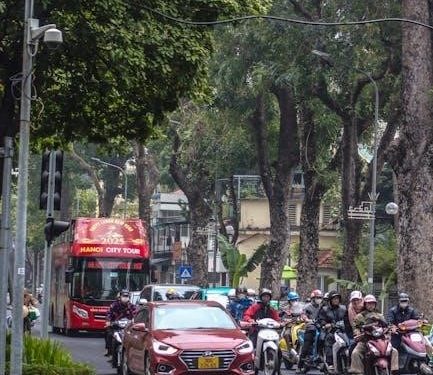Rolex is a legendary luxury watch brand founded in 1905 by Hans Wilsdorf. Renowned for its precision, elegance, and innovation, Rolex has become synonymous with excellence in watchmaking.
1.1 History and Legacy of Rolex
Rolex, founded in 1905 by Hans Wilsdorf, has built an unparalleled legacy in watchmaking. Known for pioneering innovations like the first waterproof watch, the Oyster (1926), and the Perpetual rotor (1931), Rolex has consistently pushed boundaries. Its commitment to precision and durability earned it the first wristwatch chronometer certification in 1910. Rolex’s legacy is intertwined with exploration and achievement, from the summit of Everest with Sir Edmund Hillary to the depths of the ocean. The brand’s iconic designs and timeless elegance have made it a symbol of excellence, trusted by pioneers and connoisseurs alike for over a century.
1.2 The Significance of Rolex in Watchmaking
Rolex holds a pivotal position in watchmaking, setting benchmarks for precision, reliability, and craftsmanship. Its innovations, such as the waterproof Oyster case and self-winding Perpetual movement, revolutionized the industry. Rolex’s dedication to excellence has earned it a reputation as a leader in horology, inspiring trust among professionals and connoisseurs worldwide. The brand’s relentless pursuit of perfection ensures its watches endure as timeless symbols of quality and style, solidifying its status as a cornerstone of watchmaking history and culture.

Most Iconic Rolex Models
Rolex is celebrated for its iconic models, each embodying unique craftsmanship and purpose. The Submariner, Daytona, and GMT-Master are legendary timepieces cherished by enthusiasts worldwide for their timeless elegance and functionality.
2.1 The Rolex Submariner: A Diving Icon
The Rolex Submariner, introduced in 1954, revolutionized dive watches with its robust design and water resistance up to 300 meters. Its sleek, minimalist aesthetic has captivated divers and watch enthusiasts alike, making it a symbol of adventure and precision. Over the years, the Submariner has evolved, incorporating cutting-edge materials like Oystersteel and advanced movements for improved performance. Its iconic status is undeniable, as it seamlessly blends functionality with timeless style, ensuring it remains a cornerstone of Rolex’s collection and a favorite among collectors.
2.2 The Rolex Daytona: A Racing Legend
The Rolex Daytona, launched in 1963, is a chronograph watch designed for racing enthusiasts. Its tachymeter bezel allows drivers to measure speed, while the high-contrast dial ensures readability. The Daytona became iconic after being associated with motorsport events like the 24 Hours of Daytona, earning its nickname. Over the years, it has evolved with advancements like the in-house caliber 4130 movement, enhancing accuracy and reliability. Its sporty yet elegant design has made it a favorite among watch collectors and racers, solidifying its legacy as a true racing legend in the world of horology.
2.3 The Rolex GMT-Master: A Traveler’s Companion
The Rolex GMT-Master, introduced in 1954, was designed for Pan Am pilots to track multiple time zones. Its 24-hour rotating bezel and distinctive red-and-blue “Pepsi” design made it an instant icon. Over the years, the GMT-Master has evolved, featuring advancements like the cyclops lens and modern materials such as Oystersteel. Its ability to display two time zones simultaneously has made it a favorite among globe-trotters and watch enthusiasts. The GMT-Master’s timeless design and practical functionality have solidified its place as a symbol of adventure and sophistication, making it a cornerstone of Rolex’s collection and a must-have for any serious watch collector.

Rolex Materials and Craftsmanship
Rolex is celebrated for its exceptional materials and meticulous craftsmanship, ensuring durability and timeless elegance. Every watch exemplifies the brand’s dedication to precision and excellence.
3.1 Understanding Rolex Oystersteel
Oystersteel is Rolex’s proprietary stainless steel alloy, known for its exceptional strength, corrosion resistance, and polished finish. Developed in-house, it embodies the brand’s commitment to durability and style, ensuring watches withstand the test of time and harsh environments. Oystersteel’s unique composition enhances its luster and tactile feel, making it a hallmark of Rolex’s craftsmanship. Its use across various models underscores the brand’s dedication to quality and longevity.
3.2 The Art of Rolex Dial Making
Rolex dial making is a meticulous craft that combines precision and artistry. Each dial is carefully designed and manufactured in-house, ensuring every detail reflects the brand’s high standards. From classic minimalist designs to intricate patterns, Rolex dials are handcrafted using advanced techniques. The process involves multiple stages, including printing, electroplating, and hand-finishing, to achieve a flawless finish. The iconic cyclops magnifier, a Rolex hallmark, enhances date readability. Dials are also made from high-quality materials like gold and platinum, adding to their durability and elegance. This attention to detail ensures every Rolex timepiece is not only functional but also a stunning work of art.

Rolex Movements and Precision
Rolex movements are renowned for their exceptional accuracy and reliability. Each movement is meticulously developed in-house and rigorously tested to meet COSC certification standards.
4.1 The Rolex Perpetual Movement
The Rolex Perpetual Movement is a self-winding mechanical caliber that powers the watch without the need for battery replacement. Its innovative design ensures a 70-hour power reserve, combining efficiency and precision. The movement is crafted with high-quality materials, such as Rolex’s Oystersteel, and undergoes rigorous testing to meet COSC certification standards. The Perpetual Movement is a testament to Rolex’s commitment to excellence, providing accurate timekeeping and reliability for everyday wear. Its sleek design and durable construction make it a favorite among watch enthusiasts, symbolizing both tradition and innovation in horology.
4.2 The Accuracy and Reliability of Rolex Watches
Rolex watches are celebrated for their exceptional accuracy and reliability, ensuring precise timekeeping even in extreme conditions. Each Rolex movement is certified by COSC, guaranteeing an average deviation of -2/+2 seconds per day. This precision is achieved through rigorous testing, including water resistance, temperature fluctuations, and shock resistance. Rolex’s proprietary materials, such as Oystersteel, contribute to the watches’ durability and resistance to corrosion. Additionally, Rolex’s in-house manufacturing ensures every component meets the highest standards. The reliability of Rolex watches is further demonstrated by their long service intervals, typically every 5-7 years, making them a trusted companion for everyday wear and a sound investment for watch enthusiasts.

Buying Your First Rolex
Buying your first Rolex is a significant decision, requiring careful consideration of model selection, budget, and understanding the brand’s value retention and timeless appeal.
5.1 Choosing the Right Rolex Model for You
Choosing the right Rolex model involves considering your lifestyle, personal style, and preferences. Think about whether you need a watch for diving, racing, or everyday wear. The Submariner is ideal for divers, while the Daytona appeals to racing enthusiasts. The GMT-Master is perfect for travelers. Consider the size of the watch and its features, such as water resistance or a chronograph. Popular models include the Datejust, known for its versatility, and the Explorer, designed for adventure. Research each collection to find the one that aligns with your needs and budget. Trying on different models can help you decide which one feels right. Ultimately, your Rolex should reflect your personality and lifestyle, ensuring it becomes a cherished timepiece for years to come.
5.2 Understanding Rolex Pricing and Value
Rolex watches are priced based on factors like materials, craftsmanship, and brand prestige. Entry-level models, such as the Oyster Perpetual, are more affordable, while complications like the Daytona or GMT-Master carry higher price tags. Prices vary depending on the region and retailer. Pre-owned Rolexes retain their value well, with some models even appreciating over time. Investing in a Rolex can be a smart choice due to its durability and timeless design. Understand that pricing reflects the brand’s reputation for quality and precision engineering. When purchasing, consider the long-term value and how the watch will hold up over years of use. This ensures your Rolex remains a valuable and cherished possession.












































